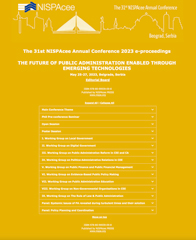Chairs:
Juraj Nemec, Matej Bel University Banska Bystrica, Slovakia
E-mail:Juraj.nemec@umb.sk
James Warner Björkman, Leiden University, Netherlands
E-mail:bjorkman@iss.nl
Project intent:
Comparative study of cross-national policy learning about health care reforms during 1990-2010 through structured multi-country research in Central and Eastern Europe; reform is defined as major shifts in (a) decision-making power over the allocation of resources and (b) the distribution of financial risks in health care funding between as well as within public and private sectors.
Main components:
A: Categories of data at five points in time for systematic comparisons among countries from 1990 (base-year), 1995, 2000, 2005 & 2010 or most recent year available:
1. Demographic characteristics
· Geographic area (km2)
· Population
· Population density (population/km2)
· Urban (percent)
· Life expectancy at birth (male & female)
· Infant mortality rate
2. Economic data (normalized with 1990 as base-year and converted into US dollars)
· Total GDP
· GDP per capita
· GDP growth rate (1980-1990, 1990-2000, 2000-2010)
· Inflation rate
3. Health care expenditures
· Outlays at all levels of government (audited)
· Public outlays as percentage of total intergovernmental budgets
· Private out-of-pocket outlays (estimates)
· Total health expenditures (public + private)
· Total health expenditures as percentage of GDP
4. Health resources (public, private, total)
· Physicians
· Physicians/100,000 population
· Other health professionals
· Other health professionals/100,000 population
· Hospital beds
· Hospital beds/100,000 population
5. Normative issues (descriptive assessment)
· Cultural orientations (solidarity-individualism continuum; sectarianism)
· Welfare principles (role of state: collectivist/residual; income protection)
· Dominant values in health policy (by political party or faction)
6. Governance of health sector (descriptive assessment)
· Main funding sources (taxes, private out-of-pocket, public/private insurance)
· Contracting & payment models (integrated, competitive, selective)
· Ownership mix (public, private, municipal, sectarian, self-employed)
· Administration (degree of government control, centralized/decentralized, regulated, stake-holder involvement, public/private partnerships, neo-corporatism)
7. Major political positions, postures and trends (contextual & historical features)
B: History of reforming health system in the country
Step by step description of what happened with focus on major shifts in (a) decision-making power over the allocation of resources and (b) the distribution of financial risks in health care funding between as well as within public and private sectors).
C: Short and medium term reforms outcomes
Analysis what was really achieved and what are remaining problems, with focus on access (fairness), economy and quality.
D: Summary of findings
Synthesis – which main policy-making and implementation problems influence the outcomes of the reforms, internal and external factors of successes and failures, general and country specific reform problems.
Expected length of the chapter: 20 single spaced pages




 Price:
Price: 








